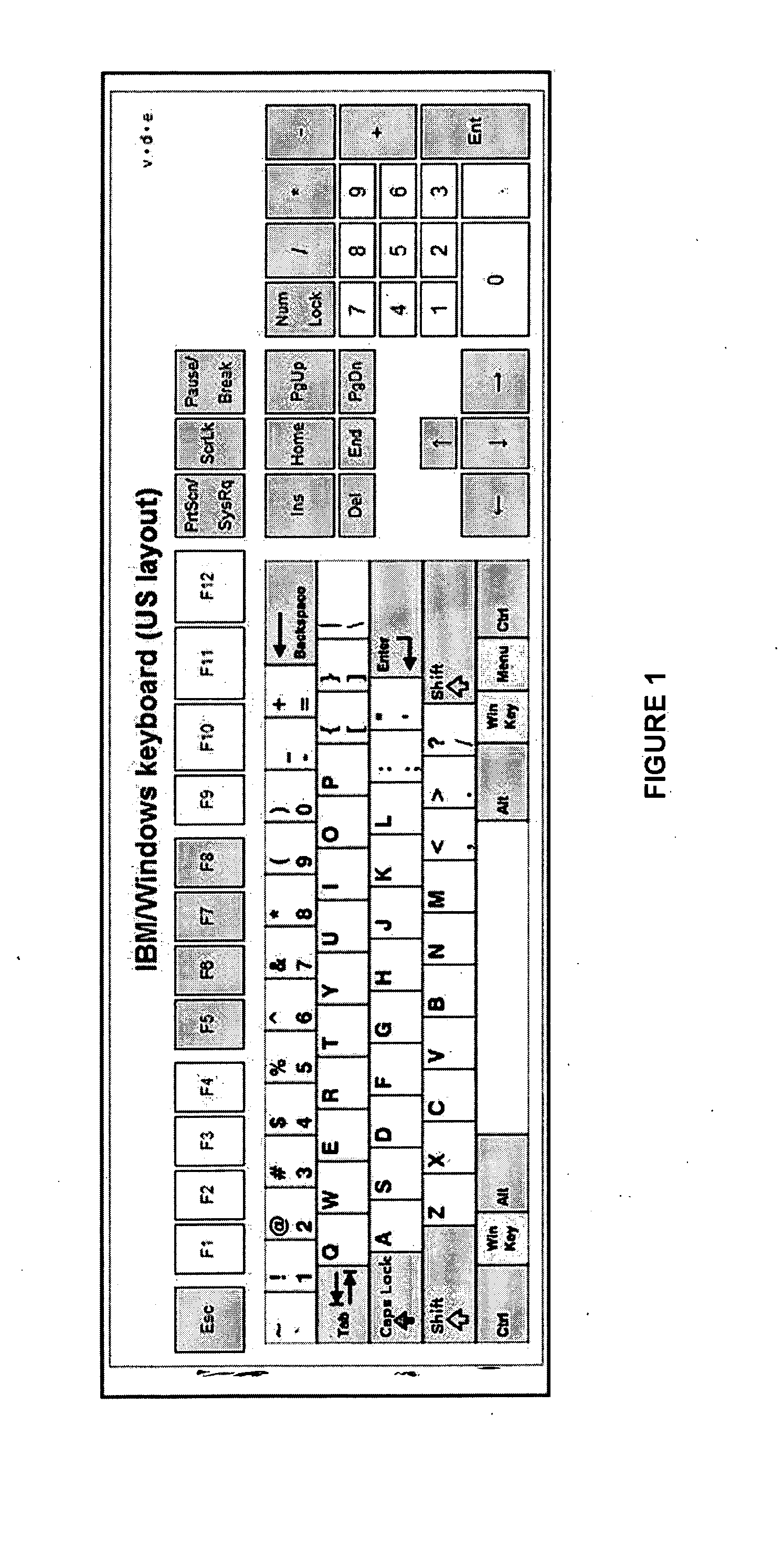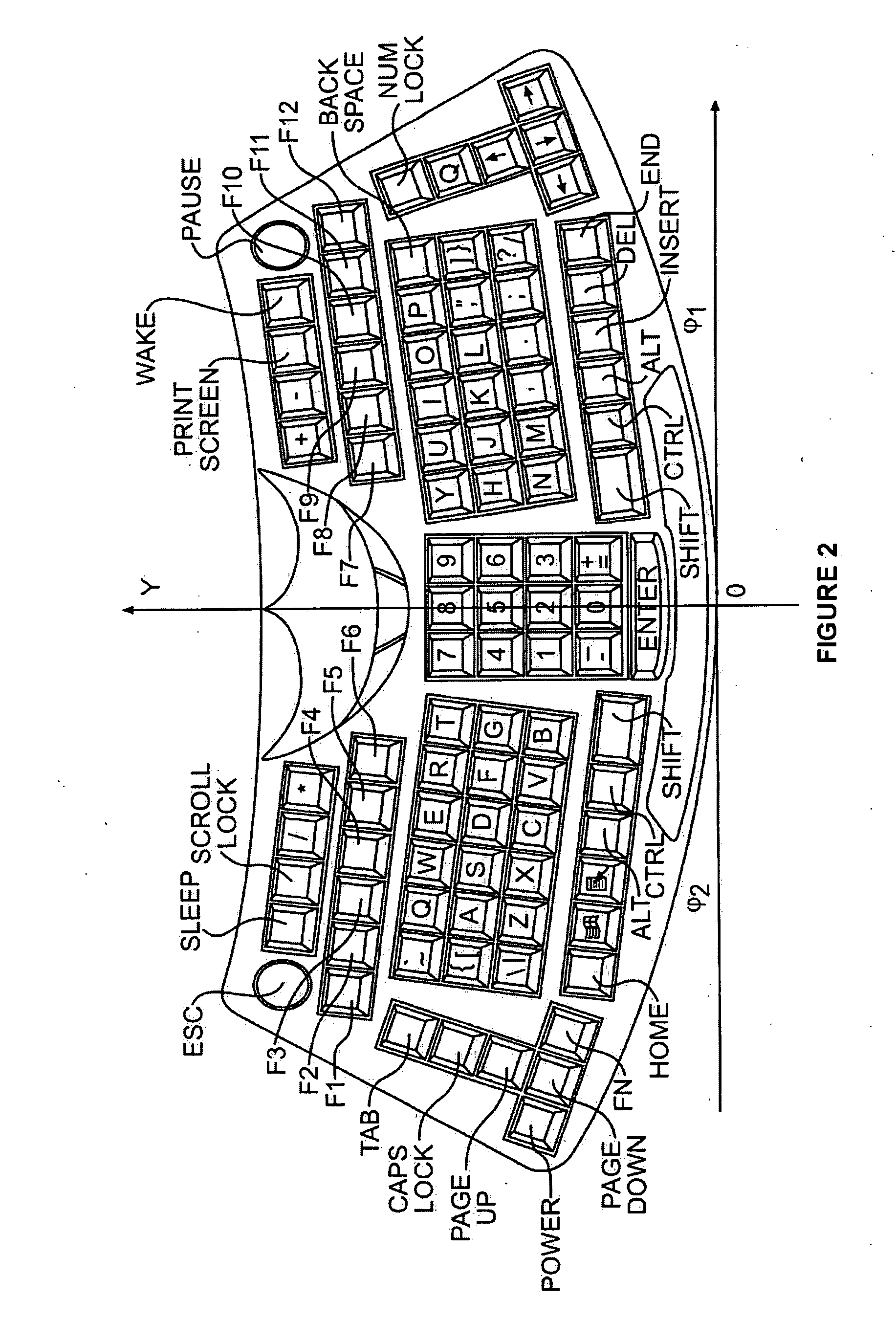Data entry device (DED)
a data entry and data technology, applied in the field of keys, can solve the problems of not taking into account, not systematic nor logical construction and the size of the ibmw keyboard is so large, and all the keys on the keyboard cannot be operated
- Summary
- Abstract
- Description
- Claims
- Application Information
AI Technical Summary
Benefits of technology
Problems solved by technology
Method used
Image
Examples
embodiment
[0088]Accordingly, the present invention provides a data entry device for enabling a user to input data, said data entry device comprising plurality of keys and a pointing device located on a keyboard such that all keys and pointing device can be operated without relocating the hands from initial resting position of hands on the keyboard and the said plurality of keys and pointing device being located so as to distribute workload to the left and right hands according to their respective capacities to do work in relation to each other and further so as to distribute the workload on each finger and thumb also according to their relative capacity to do work; said plurality of keys are divided into one or more groups in which at least one group comprises keys being located on the keyboard based on frequency of occurrence of characters in the environment and order of ease of use of keys.
[0089]In an embodiment of the present invention the said one or more groups comprise character key gro...
PUM
 Login to View More
Login to View More Abstract
Description
Claims
Application Information
 Login to View More
Login to View More - R&D
- Intellectual Property
- Life Sciences
- Materials
- Tech Scout
- Unparalleled Data Quality
- Higher Quality Content
- 60% Fewer Hallucinations
Browse by: Latest US Patents, China's latest patents, Technical Efficacy Thesaurus, Application Domain, Technology Topic, Popular Technical Reports.
© 2025 PatSnap. All rights reserved.Legal|Privacy policy|Modern Slavery Act Transparency Statement|Sitemap|About US| Contact US: help@patsnap.com



